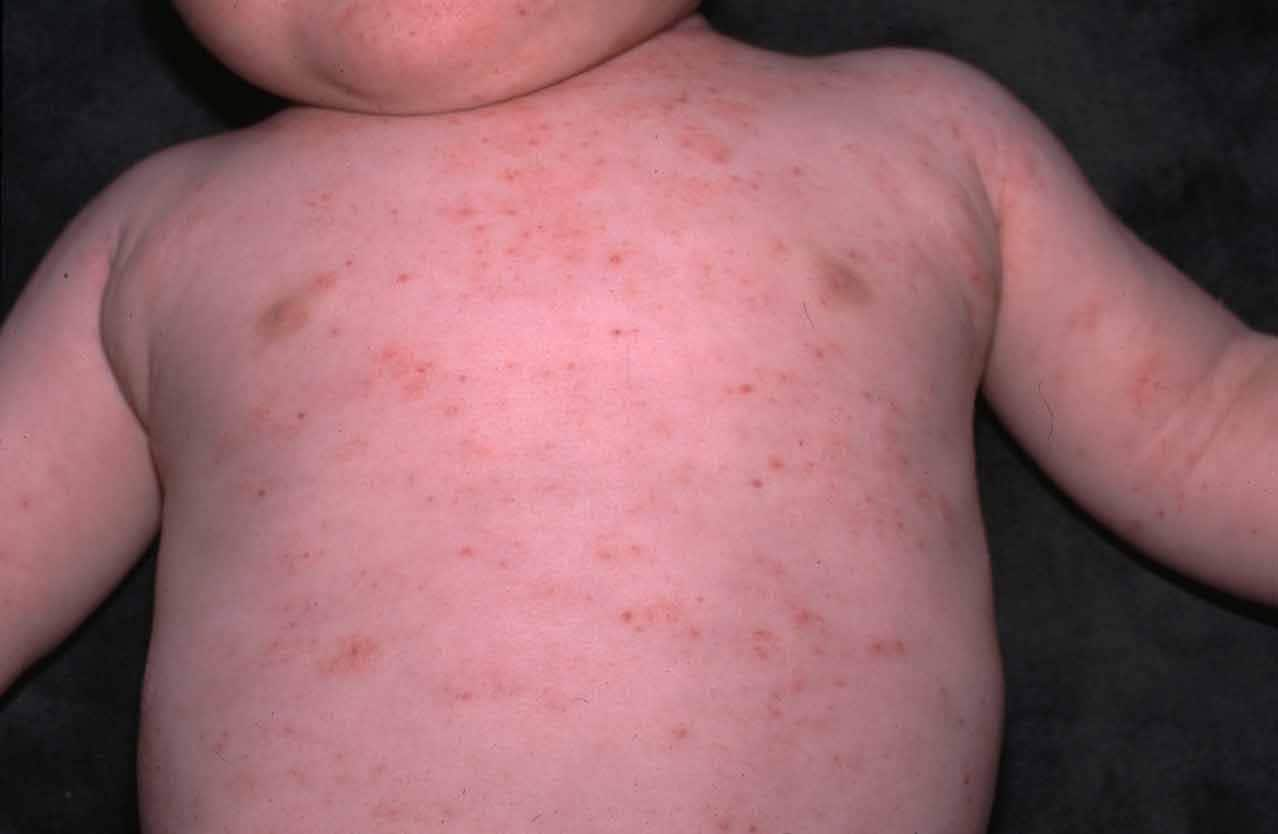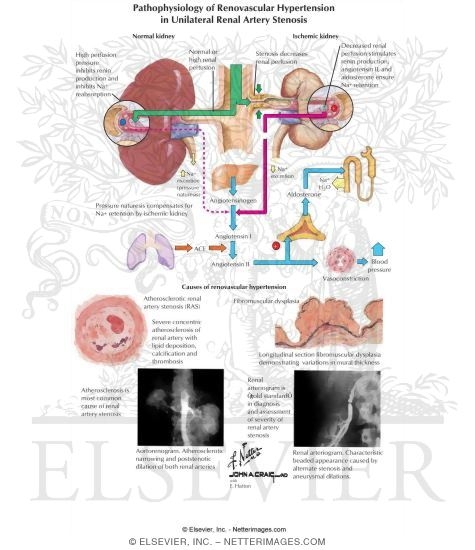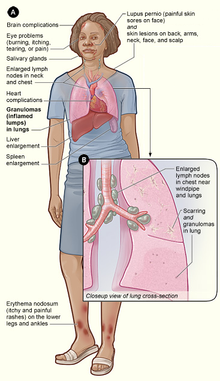Cards In This Set
| Front | Back |
|
Leg swelling + Dyspnea + Abortions
|
 Whenever you see a female patient with any of the following clinical features then you have to suspect Antiphospholipid syndromeand it's always asked about in exam. The features are:
|
|
Eczema + Petichiae + Immunodeficieny
|
 The triad should unmistakeably makes us think of Wiskott-Aldrich syndrome. The USMLE may present for you a male child (because it's X linked recessive) with a very characteristic combination of eczema and petichiae (because of thromobocytopenia). Platelets are characterisitcally small with low mean platelet volume and there's immunodeficiency characterized by low IgM and high IgA and IgE levels. Propensity to develop autoimmune disorders and lymphoma/leukemia is there. keep this syndrome in your mind for the USMLE Step 1 and also for CK. be carefull!!! dont forget to check COLD ABCESSESJOB'S syndrome has a similar presentation too Eczema + Petichiae + Immunodeficieny but it has COLD ABCESSES.... USMLE may confuse u with it... It is characterized by recurrent "cold" staphylococcal infections, unusual eczema-like skin rashes, severe lung infections that result in pneumatoceles (balloon-like lesions that may be filled with air or pus or scar tissue) and very high concentrations of the serum antibody IgE. Inheritance can be autosomal dominant, or recessive, and autosomal dominant form of the disease; these patients have problems with their bones including recurrent fractures and scoliosis. Many patients with autosomal dominant hyper IgE syndrome fail to lose their primary teeth and have two sets of teeth simultaneously. |
|
Hematuria + Hemoptysis
|
 When you see a clinical case scenario mentioning hematuria and hemoptysis you have two great diagnoses to consider: Wegener's Granulomatosis and Good Pasture Syndrome how to differentiate Wegener and Goodpasture? In Goodpasture only involved organs are kidney and lung, but wegener is a multisystemic disease, furthermore we maybe see in question two antibodies: antibasement membrane : goodpasture c-anca : wgener granulomatosis In Wegener Granulomatosis patients having history of recurrent sinusitis while patients with goodpasture syn presents with hemoptysis and nephritic syndrome. |
|
Hypertension + Adrenal Mass
|
 If you face a case where the patient is presented with elevated blood pressure and a mass in the adrenal seen in CT scan or MRI then you have two options:
In Pheochromocytoma you have elevated catecholamines with its consequent increased urinary VMA and cortisol and the crises of tachycardia, sweating, irritability ...etc In Conn's syndrome you have the effects of high aldosterone such as hypokalemia and alkalosis. While surgical treatment is similar for both of them with resection of the tumor or adrenalectomy, medical treatment is certainly different. In pheo you give alpha and beta blockers while in conn you give aldosterone antagonists such as sprinolactone or amiloride. drugs in pheochromocytoma: alpha blocker such as phentolamine, also can give alpha and beta blocker such as labetalol, but never can give exclusively beta blocker because of elevating alpha adrenergic effects |
|
Unexpected Hypertension + Resistant to treatment + Young woman + Increased Renin
|
 Sudden unexpected hypertension in a young woman with increased renin and no response to regular pharmacotherapy. Think Renal Artery Stenosis secondary to Fibromuscular dysplasia Look for abdominal bruits, beaded appearance in angiogrphy, and the treatment of choice is surgery. |
|
Painless Testicular mass + Gynecomastia
|
 A combination that should alert us to the possibility of Leydig cell tumor where the interesting testicular tumor may also produce estrogen. Another clue is the description of rod shaped crystals in the tumor cells cytoplasm (what's called the Reinke crystals).This is a testicular non -germ tumor. It is benign It is producing androgen It is the couse of precocious puberty in boys. |
|
Diabetes + Dermatitis + Anemia
|
 The combination of these three clinical features is a classical presentation of a patient with Glucagonoma. It's tumor of the alpha cells of the pancreas that produces Glucagon. Although this tumor is one of the rarist tumors of mankind it's still asked by the USMLE because it implies understanding of the glucagon physiology. The diabetes is usually mild, the anemia is due to the catabolic action of glucagon, and the dermatitis is characteristically described asMigratory Necrolytic Dermatitis. Diagnosis is made by elevated glucagon blood level and the tumor is confirmed by CT scan. Surgery is curative. |
|
Fever + Parotitis + Uveitis + Bell's Palsy!
|
 The combination of low grade fever with parotid enlargment and eye uveitis and facial nerve palsy should alert us to the possibility ofHeerfordt-Waldenstrom syndrome which is one of the presentations of Sarcoidois. The biggest confusing differential diagnosis would be Sjögren’s syndrome as these may be patients frequently fave fever, parotid enlargment, joint, and eye disease. However, the presence of hilar lymphadenopathy and the Bell's palsy are clear distinguishing features of this special sarcoid presentation. |
|
Black Stool + Constipation OR Diarrhea
|
If faced with a question describing a patient with black stool then they usually add either
Constipation and in which case you have to be thinking of stool staining by Iron tablet intake Or Diarrhea and in which case you have to be thinking of upper GI bleeding as blood in the stool stimulate more frequent defecations and looser stools. Of course this is not to be confused with the classic description of melena which is black, tarry, tenacious, sticky, peat-like stool. |



